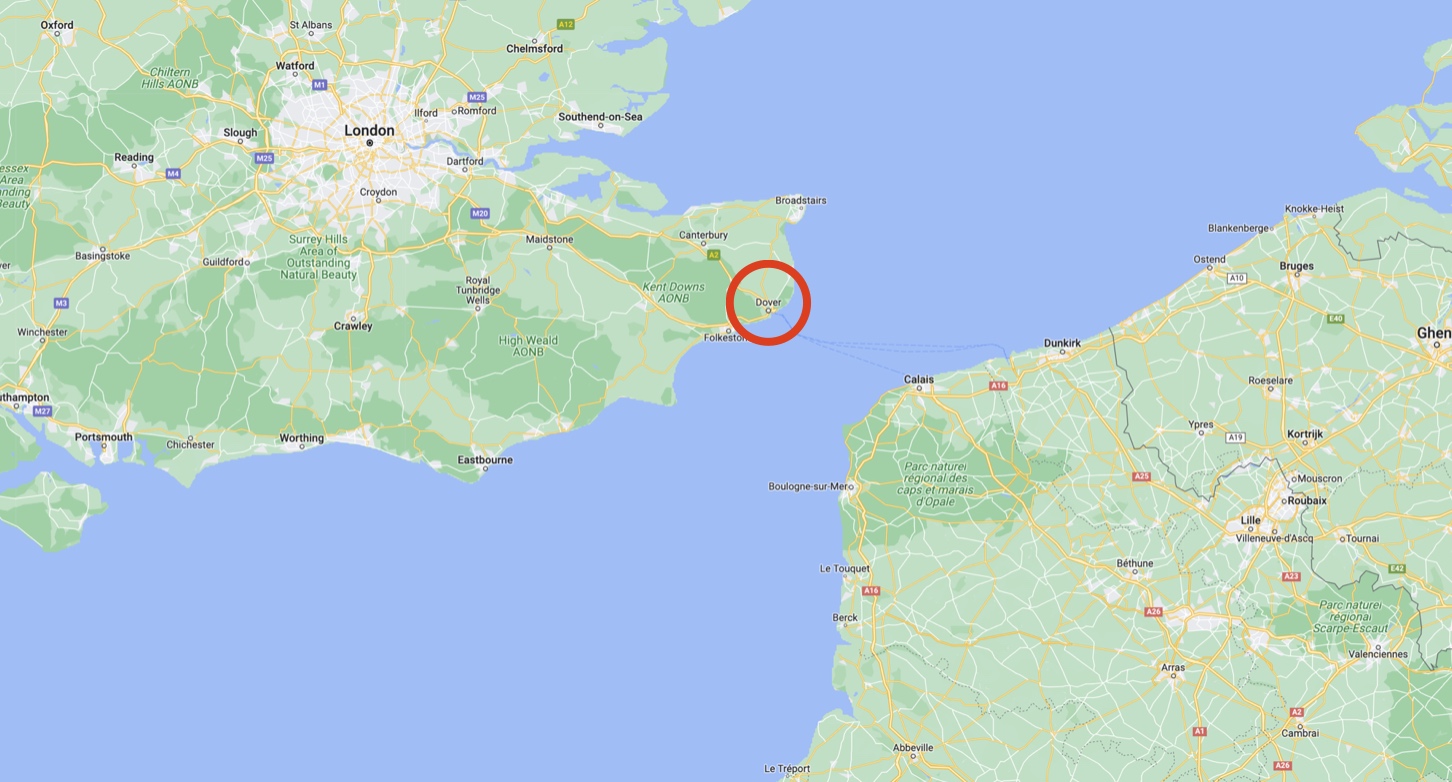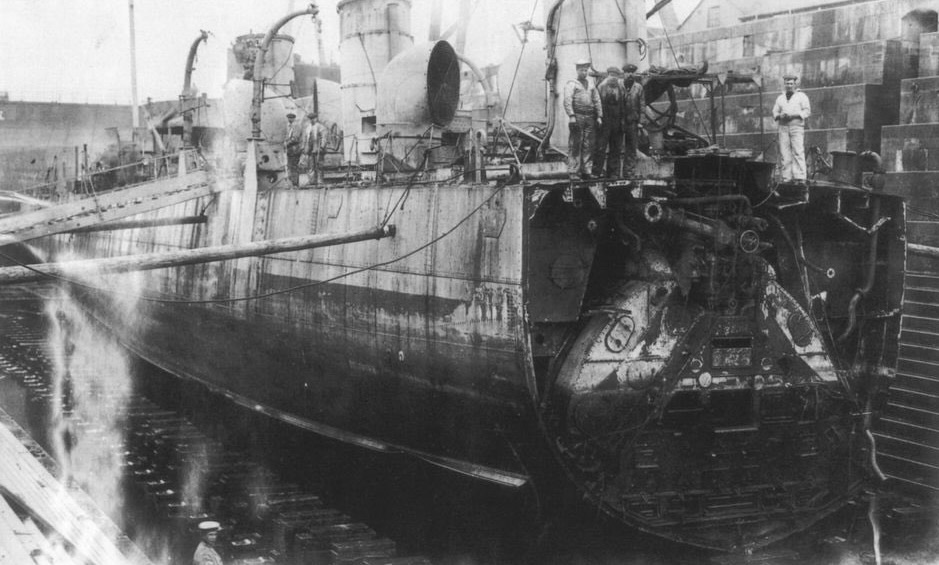In wartime, when resources are in short supply, re-using damaged parts to repair weapons and machinery isn’t just an efficient practice, it’s often an absolute necessity. In this vein, the Royal Navy created a ‘Franken-ship’ from the bow and stern of two separate vessels during World War I.
HMS Zubian, as the resulting vessel was called, was commissioned in 1917 and played a critical role in coastal defense on England’s south east coast during the latter years of the war. But what were the circumstances which led to the ship’s creation? In order to unpack this, we need to look further back to the early twentieth century during a period of British naval expansion.
HMS Zubian started out life as two separate Tribal class destroyers. 12 vessels in that class were constructed between 1905-1908, capable of high speeds of 33 knots. The result was both expensive and unsatisfactory from the Royal Navy’s perspective, however. As such, 16 slightly smaller coal-burning Beagle class destroyers were subsequently built and launched between 1909-1910 to succeed them.
HMS Nubian was the first of the two ships that formed the ‘Franken-ship’ to be delivered to the Royal Navy. Built by John I. Thornycroft & Company out of Woolston, Southampton, Nubian was launched in May 1908 and commissioned for service in September 1909.

The other half of Zubian came from HMS Zulu, which was built by the Hawthorn Leslie Shipyard out of Newcastle-upon-Tyne, north east England. The vessel was launched in September 1909 and commissioned for service in March 1910.

For a time, both vessels were attached to the First Destroyer Flotilla which, from March 1909, was part of the First Division of the Home Fleet. The Home Fleet was formed in 1902, and was designed to help protect the United Kingdom’s territorial waters. This, alongside increased shipbuilding in the early part of the twentieth century, came in response to the perceived likelihood of conflict in the North Sea.
Fears around German naval expansion from the latter part of the nineteenth century crystallized in the late 1910s. From the early twentieth century into the 1910s, the Royal Navy underwent a rapid period of expansion in response – transforming its mission from protecting and defending the Empire (and its associated trade routes) to morphing into a much larger battle fleet.
Nubian and Zulu remained with the First Destroyer Flotilla until the years immediately prior to the outbreak of World War I. In 1912, they were both transferred to the 4th Destroyer Flotilla, part of the First Fleet, which contained the most modern battleships (including all 12 Tribal class destroyers).
In July 1914 both ships were based at Portsmouth with the Sixth Patrol Flotilla on England’s south coast. By August, however, they were quickly moved (with a number of other destroyers) to Dover, south east England. It was there that Nubian and Zulu became part of the famous Dover Patrol, which came into existence in late 1914. The Patrol played a critical role in shoring up the English Channel during the war, and comprised a range of modern and more antiquated vessels.

However, within the space of a few weeks in late 1916, both Nubian and Zulu suffered major damage while on active duty.
On the night of 26-27 October, a German torpedo nearly severed HMS Nubian’s bow during the Battle of the Dover Straight. The majority of the crew survived, although 15 men were tragically killed and six were injured. HMS Lark, a Laforey class destroyer, attempted to tow Nubian‘s remains to safety. However, the towing hawser parted in the sea, causing the ship’s remains to drift to the shore of South Foreland, Dover. There, Nubian’s already damaged bow was torn off on the rocks.


Then, on November 8, HMS Zulu struck a German mine while sailing from Dover to Dunkirk. The resulting impact of the mine blew off Zulu’s stern. Two of the ship’s crew were tragically killed, as was a passenger destined for France. However, the rest of Zulu remained afloat and the French destroyer Capitaine Mehl towed the ship’s bow to Calais.

It would be reasonable to assume that the seafaring days of both ships would likely have met an end at this point. However, owing to the demands on British shipbuilding at the time, it was decided by the Admiralty that salvageable sections of the ships should be joined together to create a new vessel instead of scrapping them. Zulu’s bow and Nubian’s stern were subsequently towed to Chatham Dockyard located on the river Medway, Kent, for work to begin on creating the new ship.
The resulting ‘Franken-ship’ was named HMS Zubian to reflect the joining of the surviving parts of the damaged vessels. Zubian was commissioned on June 7, 1917, and continued to operate with the Dover Patrol for the rest of the war.
The Admiralty’s desire to create a new vessel from the remains of HMS Nubian and Zulu soon bore fruit when Zubian sank the German mine-laying U-boat UC-50 in February 1918 with depth charges. Zubian also partook in the raid on Zeebrugge and Ostend harbors on the night of April 23-24, 1918, where the vessel served as an escort to the big-gun monitors bombarding the coastal defenses at Ostend, Belgium.


Zubian was later broken up in December 1919 for scrap. As the Royal Navy had a surplus of ships after the war, the nine surviving Tribal class destroyers were also sold for scrap. The ship names Nubian and Zulu were used again for new, and much larger, Tribal class vessels in the late 1930s by the Royal Navy.
Fast forward to today, and the act of grafting a massive section from a damaged or retired ship onto a new one that is damaged remains in place, namely for submarines, including the most advanced in the world.
So there you have it, the amazing history of Britain’s World War I ‘Franken-ship’ created due to stretched wartime resources.
Contact the author: oliver@thewarzone.com
